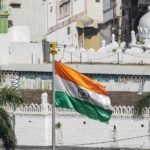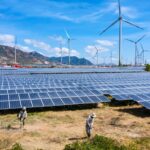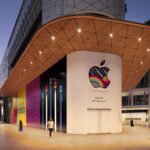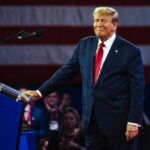A $45 billion investment set, such as shipbuilding, nuclear power, energy, chips and other sectors, helped South Korea win considerable tariffs.
U.S. President Donald Trump announced Wednesday that the U.S. would impose a 15% tariff on South Korea’s imports, a rate lower than the threatened 25%.
South Korea agreed to invest $350 billion in the Trump-chosen project and buy $100 billion worth of energy products, Reuters said, adding that the deal eased tensions with key Asian allies and one of the top ten U.S. trading partners.
See also: India will face 25% tariffs, fines starting August 1, Trump says
Trump reveals an arrangement after meeting with South Korean officials in the White House is in a snowstorm Trade Policy Announcement. Many countries are eager to cut deals by August 1, when Trump promised to raise tariffs.
“I am pleased to announce that the United States of America has agreed to a complete and complete trade agreement with the Republic of Korea,” Trump wrote in the Society of Truth.

The negotiations were an early test for South Korean President Lee Jae Myung, who took office in June after the June election. The deal eliminates uncertainty and keeps our tariffs below or at the same level as our major competitors, he said.
“We have crossed a huge obstacle,” Lee said in a Facebook post. Trump said Lee will visit the White House “in the next two weeks” to attend his first meeting with the U.S. president.
Trump added that South Korea will accept U.S. products, including automobiles and agricultural products, and will not impose import tariffs on them.
Senior South Korean officials said the country’s rice and beef market will not open further and discussions on U.S. demand for food regulations continue.
Citi economist Kim Jin-Wook said Seoul appears to have defended its non-tariff barriers while keeping its tariff rates on par with Japan and the EU.
“While the headlines seem to be a huge victory for the United States, the details seem to be good for South Korea,” he said.
$150 billion for shipbuilding partnerships
South Korea seems to have avoided the worst, agreeable, North Korean Trade Minister Cheong In-kyo. But he also said that if the spending of $350 billion is not good, opinions on the deal could change.
It is unclear what the investment will involve, where the financing will come from, in what time frame it is implemented and to what extent its terms will be binding. Trump said additional South Korean investment will be announced later.
total $150 billion in shipbuilding partnershipKim Yong-Beom, policy director at South Korea’s presidential office, said that while chips, nuclear power, batteries and biotechnology include chips, nuclear power, batteries and biotechnology, there are $200 billion, he said.
He said “ambiguity is good”, while adding that negotiators ensure that the way funds are used is secure.
Another presidential official said the existing investment plan of the South Korean company will be part of the fund.
U.S. Commerce Secretary Howard Lutnick said in an article on X that 90% of the profits of the $350 billion fund are “going to the American people.”
Kim said South Korea understands that it means that some profits can be reinvested.
Energy purchases over 3.5 years
He added that energy purchases will include liquefied natural gas, liquefied petroleum gas, crude oil and a small amount of coal.
“This is in our usual import volumes,” he said, noting that this could lead to a “slight shift” in imports from the Middle East to more U.S. sources.
Lutnick said that purchasing energy will happen “within the next 3.5 years.”
Lutnik said the tariff rate for South Korean cars will also be 15%, which is down from the current 25% rate.
Lutnik also said that semiconductor and drug exports will not be treated more severely than other countries. Steel, aluminum and copper are not covered by the new exchange.
Catch up with the new leader
South Korea is one of three Asia-Pacific countries to reach a comprehensive free trade agreement with the United States, but it cannot exempt new tariffs.
The negotiations took place in South Korea’s turbulent political environment, with former President Yoon Suk Yeol removed from office in April after being impeached for attempts to impose martial law.
Negotiators’ pressure has increased Japan reaches an agreement Earlier this month.
South Korea has been a special target for Trump because of its trade surplus and the cost of maintaining the country’s approximately 28,500 U.S. troops to defend North Korea.
Last year, South Korea’s trade surplus with the United States reached a record $5.7 billion, a 25% increase from the same period last year.
South Korean companies welcomed the deal, saying it would reduce uncertainty.
In the last minute efforts to reach a tariff agreement Samsung Electronics signs $16.5 billion in chip deal With Tesla. LG Energy Solutions also signed $4.3 billion deal to offer Tesla People familiar with this said that batteries are used in energy storage systems.
- Jim Pollard’s additional editor Reuters








